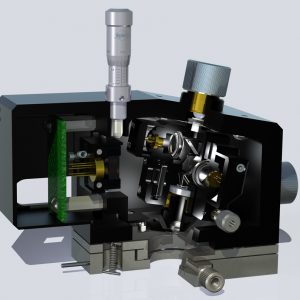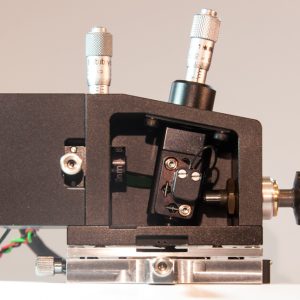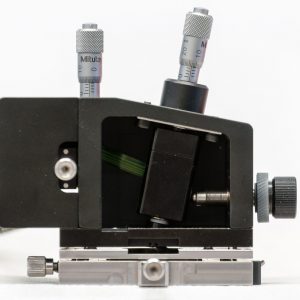Small cantilevers have clear benefits for AFM operation. Nevertheless, most AFM systems do not use small cantilevers, nearly 20 years after they were first developed. In order to help overcome this barrier to use, we created a compact, modular and user-friendly small cantilever deflection readout head that is designed to interface easily with the MultiMode AFM system.
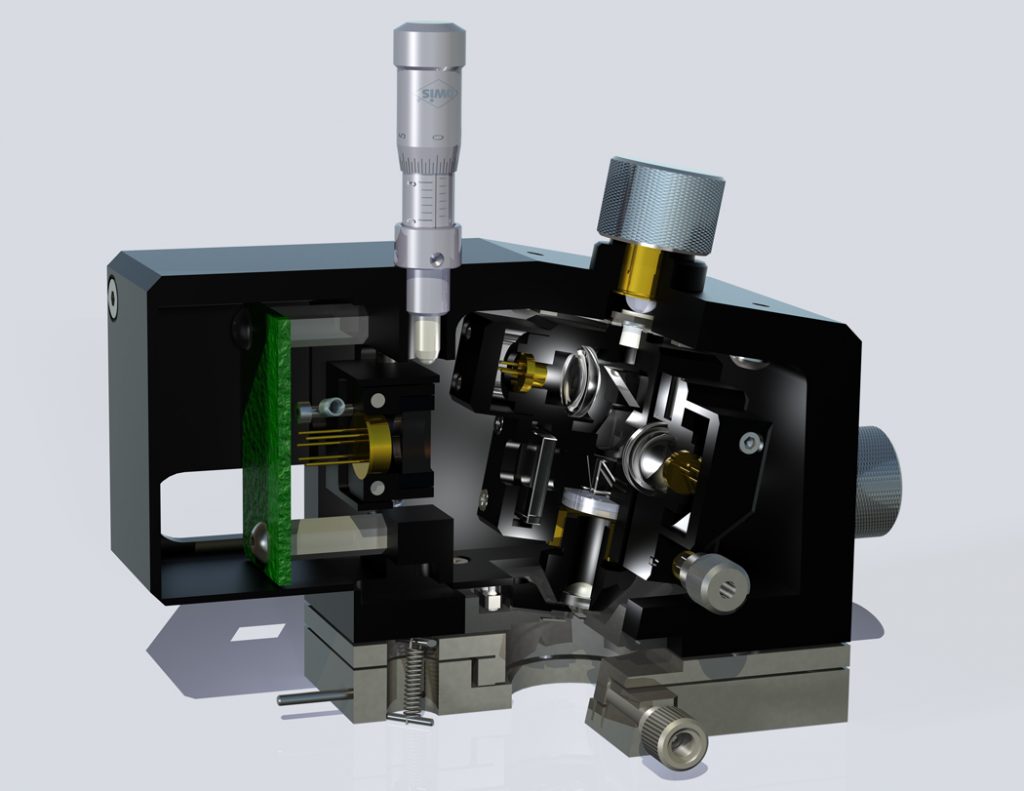
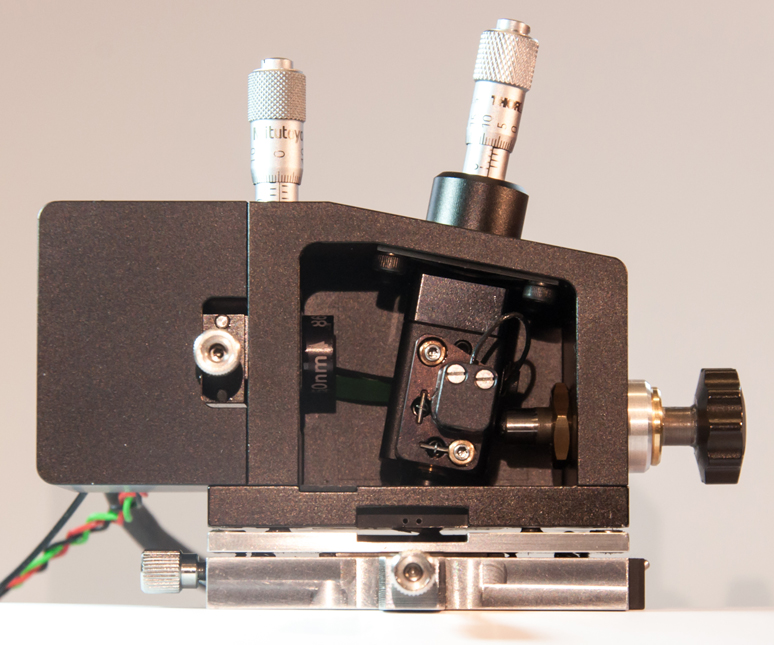
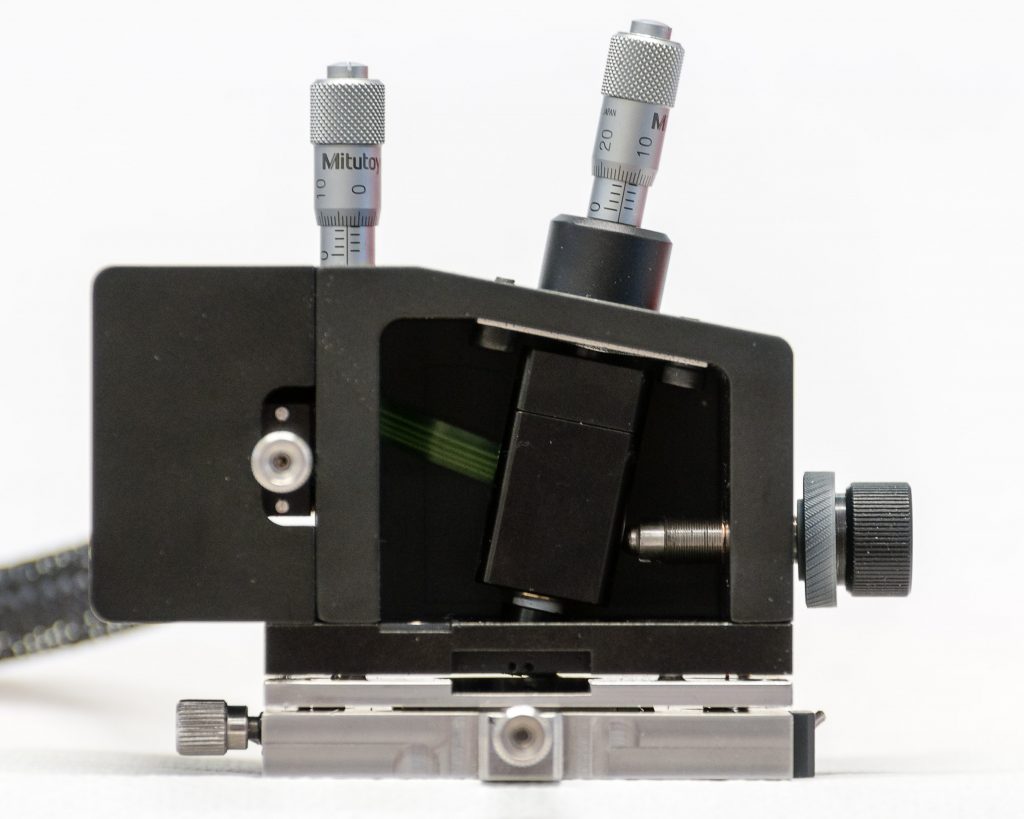
With this head, we can read out deflection from cantilevers as small as 2 µm wide, and at frequencies up to 20 MHz. Using this head coupled with scanner dynamics compensation (Burns et al. 2011) and a high-speed AFM controller, we imaged lipid bilayer samples in liquid in tapping mode at up to 500 Hz for a 2.7 µm scan size. More details can be found in our paper describing this system and in the hardware downloads section of our website.

We recently extended the capabilities of this readout head to include photothermal cantilever excitation. For shaking AFM cantilevers at high frequency or in liquid, photothermal excitation provides a very clean, efficient drive. This system combines two focused laser spots that can be positioned independently – one for deflection readout, and one for cantilever excitation.
Photothermal cantilever excitation eliminates many of the difficulties associated with piezo-based excitation in liquid and at higher cantilever harmonics. The figure below shows: (a) In contrast to piezo excitation, photothermal excitation cleanly and stably drives the first two resonances of a small cantilever in fluid over nearly two hours. (b) Cantilever dynamics up to 20 MHz can be excited and detected with our readout system. (c) Our high-frequency readout electronics yield a low baseline noise floor, detecting even the easily-missed 2nd resonance peak (d).
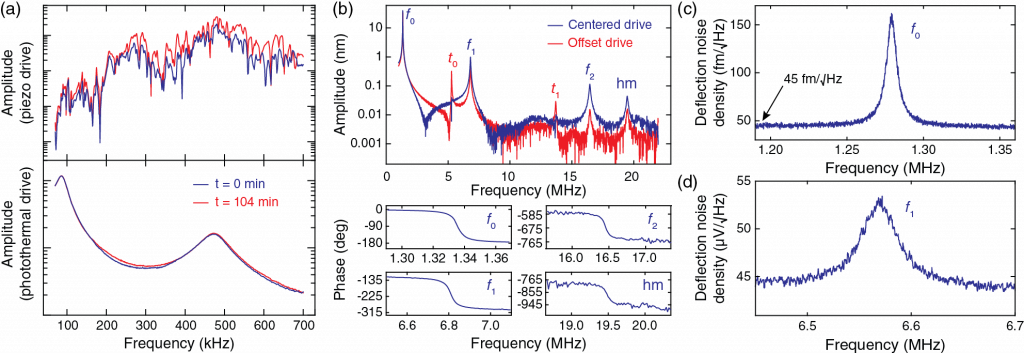
This system is well suited to advanced AFM techniques like multimodal imaging. These techniques give additional information about the mechanical properties of the surface being imaged. With our photothermal readout head, we showed the capability of high-frequency bimodal imaging in both air and liquid.
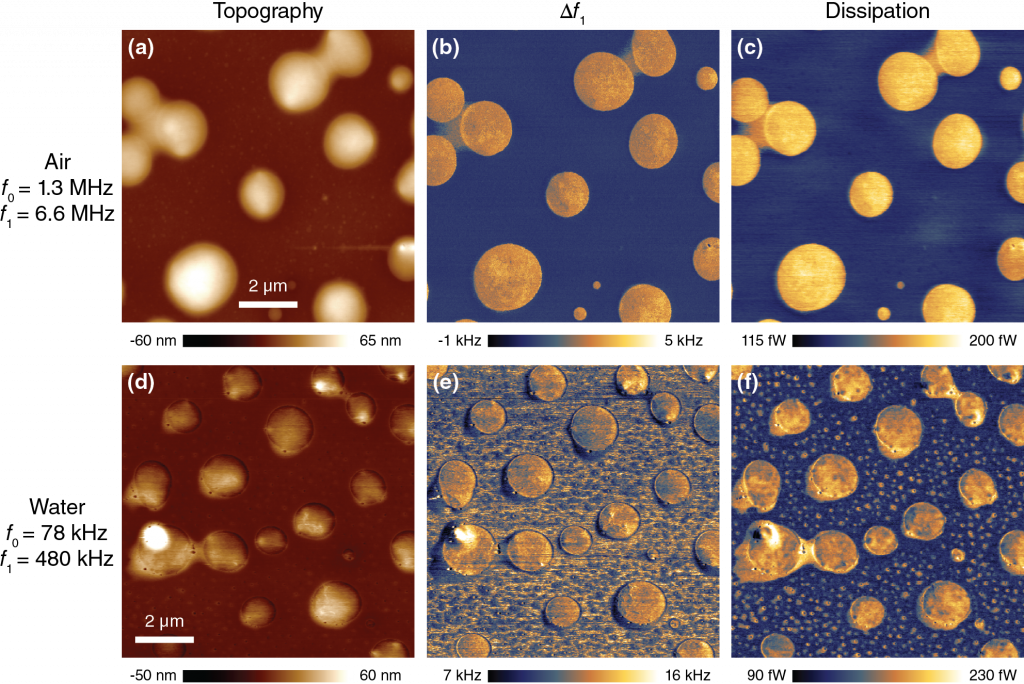
We continuously improve this system. Visit our open hardware page if you are interested!
